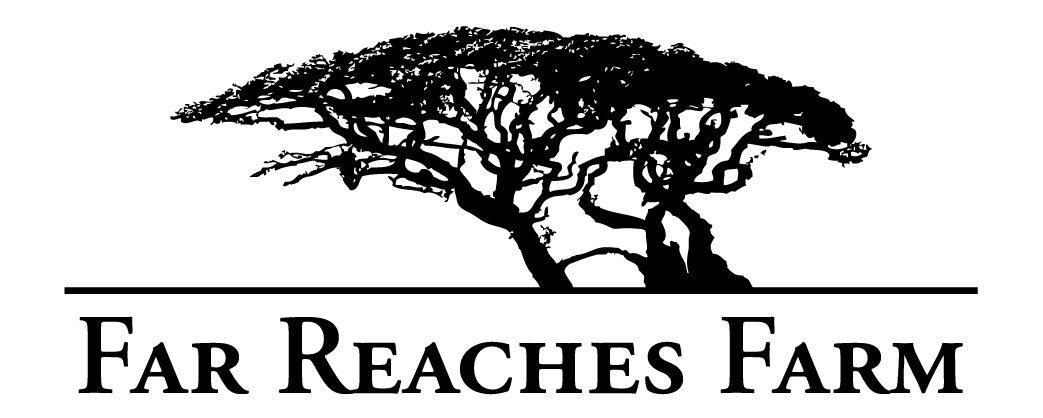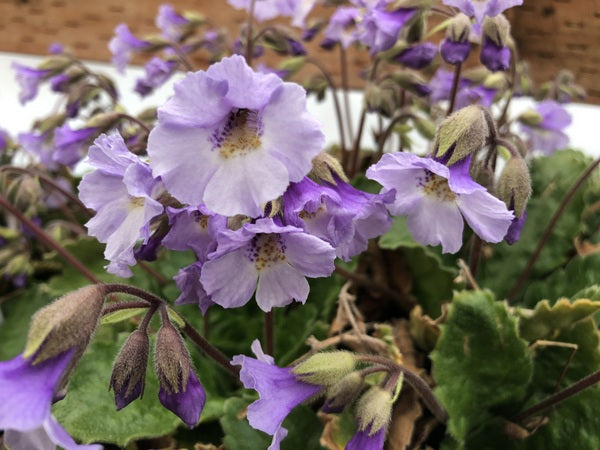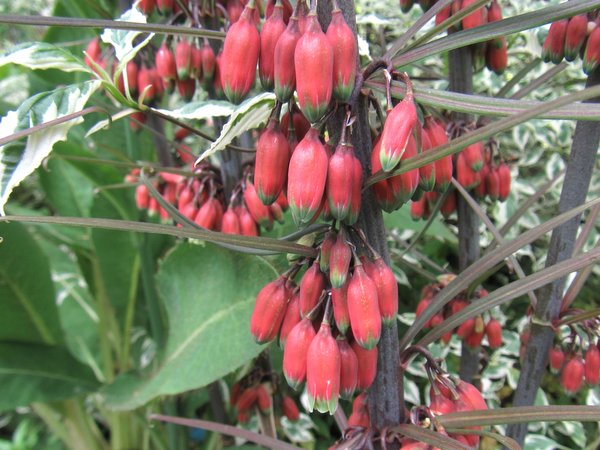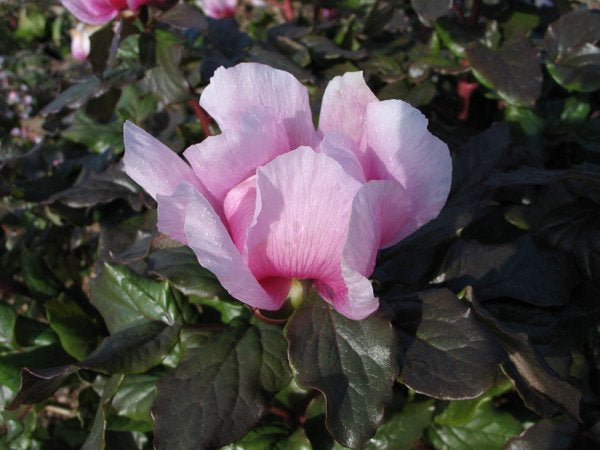Sort by:
1758 products
1758 products
The word exceptional describes this ultra-collectible plant – a species peony in the truest sense. It is unlike its well-known relatives and mudblood hybrid cousins in just about every way. Fleshy blue-green leaves are flattened and dissected in a way that resembles birdwings illustrated by medieval illuminators, ornamental to the maximum. The single, diminutive, downward-facing flowers on the other hand are something only a plantaholic could love, leathery and not at all blousey but with a charismatic scarlet and yellow coloration that makes some amends. Rarely offered and rarely seen, in part because it inhabits the dry pine woodlands east of the Mountain West. Even though it is native to Washington east of the Cascade Mountains, this collection is from the southernmost part of its range in Washoe County, Nevada. Given its habitat, in wetter climates this will ask for quite good drainage in full sun to dappled shade – our happy plant likes our rainshadow rock garden. Any inherent and perceived challenges are well worth the trouble for those with supreme taste. While these are relatively small seed-grown plants which aren’t flowering size - not of the standard hybrid peony three-eye variety – this is more than enough to get your plant-nerd on!.
*LIMIT 2 PER CUSTOMER*
Chameleon Vine. Crazy evergreen vine from the temperate forests of Chile and Argentina which only very recently was found to mimic the plants upon which it grows. The leaves increase or decrease in size, get darker or lighter, broader or narrower depending on its host or nearby plant. Flowers are insignificant on this science project.
One of the finest of the species Peonies, this Mediterranean goody is among the first to bloom in spring. Fabulous new growth and very showy single pink flowers. If you want scent, get a hybrid. If you want class, here you go. This is a stunning and very good plant whose foliage gleams with a metallic sheen which looks great throughout the summer. The late summer/early fall seed pod display is of high ornament. Good, well drained soil, this will be more heat tolerant than the other species and the one most apt to succeed if you live in an area with minimal winter cold. When planting, just cover the red buds no more than an inch or two. The large band pots are seedlings that are a couple years from blooming size. The bare root are large and flowering size.
Perhaps the penultimate perennial in our shade garden. This Asian False Solomon Seal species reaches the pinnacle of expression in this pink-purple flowered form. In time, this will develop thick stems variably black or green and less commonly coated in a subtle pale peach fuzz of small hairs. These impressive shoots arise from the soil in spring as if the imaginings of some wild fever dream about asparagus. At full maturity which will take some years, these will be pushing 6' in height and when in flower will render even the most consummate gardener speechless.
(David Culp, author of 'The Layered Garden', was not without speech when he dropped to his knee upon seeing this blooming but the words were disconnected and for the most part unintelligible. He said almost a year later in conversation "You know, that was was just one of those moments in your life").
The large panicles of small pinkish purple flowers appear usually the first week of June for us and own the shade garden. We have many striking plants in the garden but when Martha Stewart Living wanted to know when to come out and shoot the garden, we said "First week of June - Maianthemum oleraceum will be blooming". It will be a few years before these become contenders for the best thing in your garden but if ever a wait was worth it, this is that wait.





























